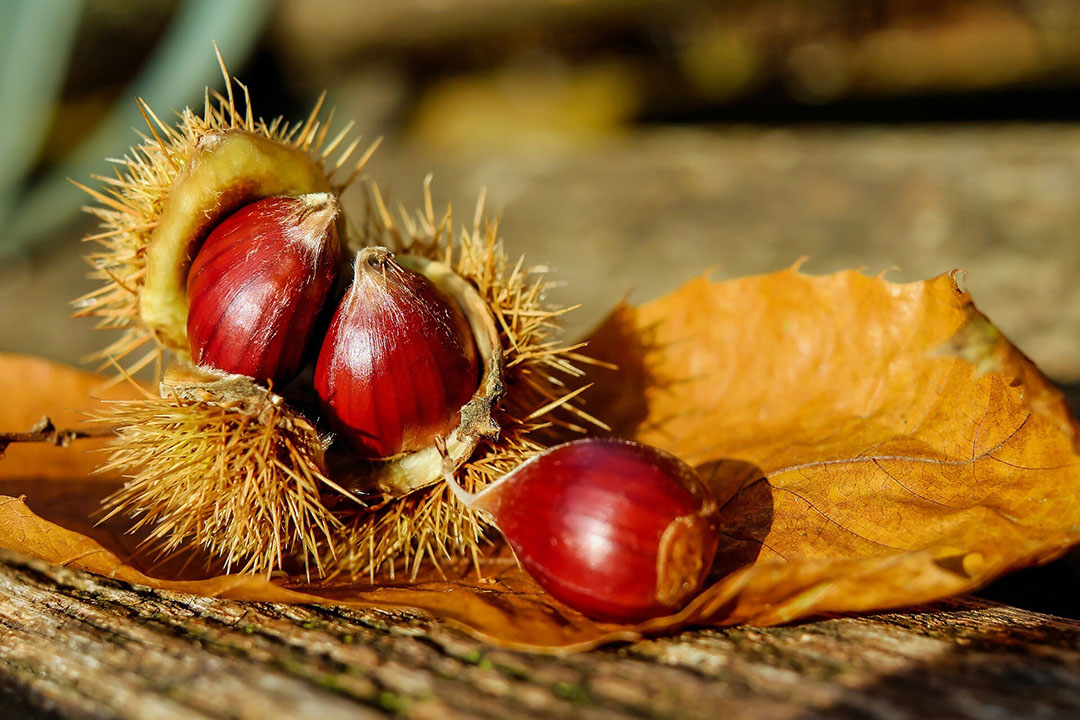Effect of chestnut wood extract on broilers

Plant extracts can be used as natural antioxidants as well as alternative feed additives in livestock and poultry species. Researchers looked at chestnut wood extract.
Polyunsaturated fatty acids
Plant extracts have been studied as alternative feed additives and were reported as a good source of natural antioxidant to improve animal production and health. However, plant extracts contain higher amounts of polyunsaturated fatty acids that may lead to oxidative stress in chickens.
Tannins
Tannins are secondary plant metabolites that are commonly classified under 2 groups, condensed tannins and hydrolysable tannins. Condensed tannins hold antinutritional factors and could decrease protein digestibility because of its protein precipitation nature, and thus, the long-term uses of condensed tannins could decrease the growth performance and nutrient digestibility in monogastric animals. On the other hand, it is believed that hydrolysable tannins have a positive role in growth performance and health status in chickens. Hydrolysable tannic acid is made from wood extract that has higher polyphenolic compounds.
 Benefits of chestnut tannins and fatty acids in broilers
Benefits of chestnut tannins and fatty acids in broilers
A recent trial found that a mix of chestnut tannins and short medium chain fatty acids presents promise to contrast the growth of pathogens in poultry rearing.
Chestnut wood extract and broiler performance
The study set out to examine the hypotheses that dietary chestnut wood extract as a source of hydrolysable tannic acid can replace in-feed antibiotic and improve the growth performance, nutrient digestibility, meat quality, antioxidant status, immune function, and lipid metabolism in broilers. In the study at the College of Animal Science and Technology at the China Agricultural University in Beijing, 168 day-old Arbor Acre male broilers (weight 46.59 ± 0.44 g) were randomly divided to 3 treatments – a control diet of corn-soybean meal basal diet, an antibiotic diet of the basal diet + 75 mg/kg chlortetracycline, and a chestnut wood extract diet of the basal diet + 1,000 mg/kg chestnut tannins.
 Use of natural extracts as feed additives
Use of natural extracts as feed additives
The effect of sweet chestnut tannins on several aspects of animal rearing have been reported.
Study outcomes
Body weight of broilers:
At the finisher phase, final body weight was higher in the chestnut wood extract supplemented diet than in the control group. Average daily body weight gain was higher and feed gain ratio was lower in broilers fed chestnut wood extract than in those fed the control diet. Crude protein digestibility, breast muscle pH value at 24 h, as well as the bursa weight were all higher in the broilers fed the diet supplemented with chestnut wood extract.
Breast muscle & thigh muscle of broilers:
Total antioxidant capacity (T-AOC), glutathione peroxidase (GSH-Px), and superoxide dismutase (SOD) values were higher in both breast muscle and thigh muscle of broilers offered chestnut wood extract supplemented diet than those in broilers fed the control or antibiotic diets. Similarly, broilers offered the chestnut wood extract diet showed higher T-AOC, GSH-PX, and SOD value in serum than those fed the control or antibiotic diets.
Cholesterol:
Furthermore, serum concentration of IgG was higher and total cholesterol, low-density lipoprotein cholesterol, and urea-N concentration were all lower in broilers offered with chestnut wood extract compared to the other 2 diets. It was therefore recommended to supply CWE at the 1,000 mg/kg level for improving antioxidant status, cholesterol metabolism, and growth performance without affecting normal meat quality in broilers.











